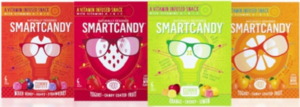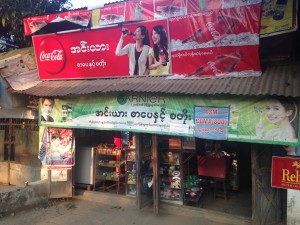Sponsored research inevitably favors the sponsor’s vested interests
I am increasingly concerned about the proliferation of research studies sponsored and funded by food, beverage, or supplement companies with a vested interested in the outcome. These almost invariably come to conclusions in favor of the sponsor’s food product.
You must understand that I am not searching for sponsored studies in any systematic way. They just appear in the tables of contents of journals I typically read and are easily identified by their titles.
My plan is to post a list of sponsored research studies every time I accumulate 5 examples. My first post in this series appeared March 16.
Recent examples
1. Purified palmitoleic acid for the reduction of high-sensitivity C-reactive protein and serum lipids: A double-blinded, randomized, placebo controlled study, by Adam M. Bernstein, MD, ScD, Michael F. Roizen, MD, Luis Martinez, MD, MPH. Journal of Clinical Lipidology 2014;8:612–617.
- Conclusion: Purified palmitoleic acid may be useful in the treatment of hypertriglyceridemia with the beneficial added effects of decreasing LDL and hs-CRP and raising HDL.
- Sponsor: Tersus Pharmaceuticals (maker of Provinal palmitoleic acid). Dr. Roizen is chair of the Scientific Advisory Board of Tersus Pharmaceuticals and chair of the Cleveland Clinic Wellness Institute.
2. Whey Protein Supplementation Preserves Postprandial Myofibrillar Protein Synthesis during Short-Term Energy Restriction in Overweight and Obese Adults, by Amy J Hector, George R Marcotte, Tyler A Churchward-Venne, Caoileann H Murphy, Leigh Breen,Mark von Allmen, Steven K Baker, and Stuart M Phillips. J Nutrition 2015;145:246–52.
- Conclusion: We conclude that whey protein supplementation attenuated the decline in postprandial rates of MPS [Myofibrillar Protein Synthesis] after weight loss, which may be of importance in the preservation of lean mass during longer-term weight loss interventions.
- Sponsor: The Dairy Research Institute through the Whey Protein Research Consortium.
3. Natural cocoa consumption: Potential to reduce atherogenic factors? By Brian K. McFarlin, Adam S. Venable, Andrea L. Henning, Eric A. Prado, Jill N. Best Sampson, Jakob L. Vingren, David W. Hill. J Nutritional Biochemistry 2015: in press.
- Conclusion: Collectively, these findings indicate that acute natural cocoa consumption was associated with decreased obesity-related disease risk.
- Sponsor: The Hershey Company
4. The effect of a high-egg diet on cardiovascular risk factors in people with type 2 diabetes: the Diabetes and Egg (DIABEGG) study—a 3-mo randomized controlled trial, by Nicholas R Fuller, Ian D Caterson, Amanda Sainsbury, Gareth Denyer, Mackenzie Fong, James Gerofi, Katherine Baqleh, Kathryn H Williams, Namson S Lau, and Tania P Markovic. Am J Clin Nutr 2015; 101:705-713.
- Conclusion: High egg consumption did not have an adverse effect on the lipid profile of people with T2D [type 2 diabetes] in the context of increased MUFA [monounsaturated fatty acid] and PUFA [polyunsaturated fatty acid] consumption. This study suggests that a high-egg diet can be included safely as part of the dietary management of T2D, and it may provide greater satiety.
- Sponsor: Australian Egg Corporation
5. Dietary Flaxseed Independently Lowers Circulating Cholesterol and Lowers It beyond the Effects of Cholesterol-Lowering Medications Alone in Patients with Peripheral Artery Disease. Andrea L Edel, Delfin Rodriguez-Leyva, Thane G Maddaford, Stephanie PB Caligiuri, J Alejandro Austria, Wendy Weighell, Randolph Guzman, Michel Aliani, and Grant N Pierce. J. Nutr. 2015; 145:749-757.
- Conclusion: Milled flaxseed lowers total and LDL cholesterol in patients with PAD [peripheral artery disease] and has additional LDL-cholesterol–lowering capabilities when used in conjunction with CLMs [cholesterol-lowering medications].
- Sponsor: Flax2015, the Canola Council of Canada, and others.










